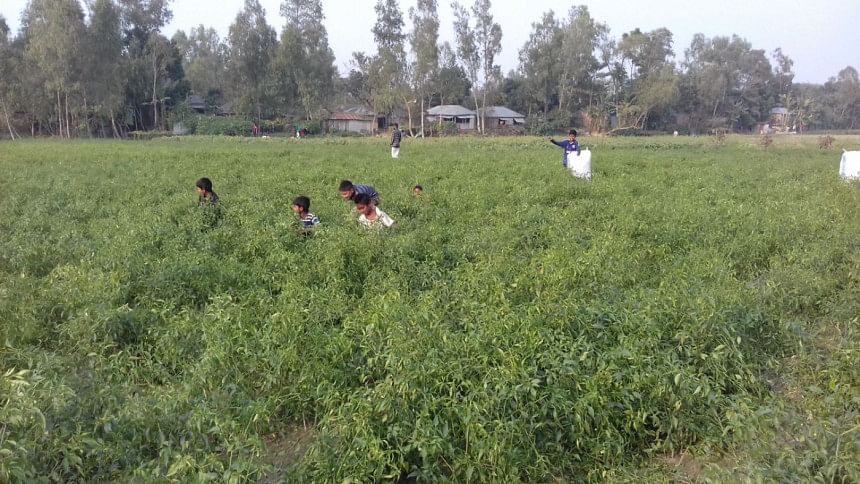School attendance crisis on Bogra's Jamuna chars

On the Jamuna river shoals (char landmass emerging from riverbed) in Bogra's Sariakandi upazila, all too often school isn't as important as farm work. A combination of widespread financial hardship and some schools being run by less-qualified para-teachers has resulted in at least a thousand students dropping out in favour of manual labour.
“When students go to school they just play for a few hours and return home,” says one guardian, Ayan Uddin from Shanpancha village, on a shoal of the same name in Karnibari union. “There is no education to be had. The teachers arrive around 11:00am and leave before 2:00pm That's why many parents have lost interest in sending their children to school.”
The acting headmistress of Char Shanpancha Government Primary School says one of the main difficulties faced by teaching staff is transport. “My home is fifteen kilometres from the school,” she explains. “I have to travel three kilometres by rickshaw, four by bus and then another three by boat, to finally walk five kilometres to reach the school grounds. It's very time-consuming.”
“As we do inevitably arrive at the school late, we have a local Higher School Certificate graduate to hold classes as a para-teacher,” she continues. “Like me, our two assistant teachers are women. For security considerations it's unreasonable to expect them to stay the night on the shoal. Although we face many difficulties to reach school, we do our best.”
Several initiatives have been taken to encourage school attendance in shoal areas. Students receive a scholarship of Tk 100 per month for attendance and midday meals are provided. School infrastructure has been developed. And yet, it seems, such efforts have met with limited success.
If a child harvests chillies instead of going to school, they can earn around Tk 100 per day, which is difficult for struggling families to resist.
Meanwhile, Sariakandi's assistant thana education officer Rafiqul Alam disagrees that the standard of education in shoal schools is lacking. “We have sufficient classes and proper education in those areas,” he says. “There is no para-teacher in any of the schools. Teaching quality is improving day by day.”
He says that of the upazila's 168 primary schools, the 44 schools that are located on shoals cater to the needs of nearly 7,000 students. Rafiqul claims class attendance stands at over ninety percent; but many parents disagree. On the shoals they claim, only a very few students attend class with regularity.


 For all latest news, follow The Daily Star's Google News channel.
For all latest news, follow The Daily Star's Google News channel. 



Comments